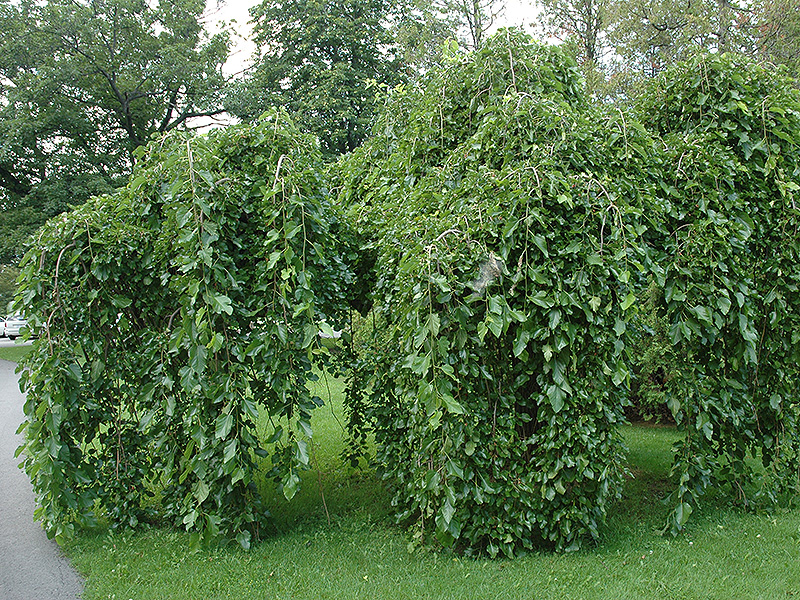
Woody > Morus > Morus alba > Morus alba
Morus alba
White Mulberry
Origin: Originally from China, introduced to North America in the 1600's.
Mike's
Opinion


"
A tree that can endure poor conditions and has raspberry/blueberry like fruit. The fruit can stain driveways and sidewalks, best suited for parks, and large open areas. It is considered an invasive species and has been known to cross breed with our endangered Morus rubra.
Michael Pascoe, NDP., ODH., CLT., MSc. (Plant Conservation)
"
| Family |
| Moraceae |
| Genus |
| Morus |
| Species |
| alba |
| Category |
| Woody |
| Type |
| Tree (deciduous) |
| Pronunciation |
| USDA Hardiness Zone |
| 4 - 9 |
| Canadian Hardiness Zone |
| 5a |
| Temperature (°C) |
| -34 |
| Temperature (°F) |
| -30 |
| Height |
| 20 m maximum |
| Spread |
| 2.5-4.5 m |
Photographs
Description and Growing Information
Flowering Period
| General Description |
| Fast growing, short lived tree with fruit that resemble blackberries or raspberries. |
| Landscape |
| Fruit attracts birds and the leaves are used as a food source for silk worms in Asia. May be considered an invasive species in some areas. |
| Cultivation |
| Hybridizes with the wild red mulberry. The red mulberry is endangered and the hybridization is causing some concern as the genetic pool is reduced. Not a recommended species. |
| Shape |
| Drooping and pyramidal. |
| Growth |
| Fast |
| ID Characteristic |
| Medium sized tree with green-white flowers and purple/black fruit. |
| Pests |
| Bacterial blight, leaf spots, cankers, powdery mildew and scale. |
| Habitat |
| Sparse forests and hillsides in part shade/full sun. |
| Bark/Stem Description |
| Brown/orange to beige on young plants and brown on older trees. Quite distinct and easily recognized by its bark characteristics when young. |
| Flower/Leaf Bud Description |
| Round lateral buds appear in late autumn or early winter. |
| Leaf Description |
| Serrated and ovate, alternate, simple or lobed, 5-17 cm long up to 15 cm wide. The leaves are quite variable in shape and thus can become confusing to identify by the amateur. |
| Flower Description |
| 1-3 cm long, yellowish green,both sexes on same plant. The stamens fire pollen into the air at 560 km/h which is about half the speed of sound is the fastest recorded plant movement in the world. |
| Fruit Description |
| Resembles a blackberry or raspberry, 1 -2.5 cm long, sweet but bland, unripe fruit should not be eaten as they are slightly toxic. I have had the fruit in pies and find it quite delicious. |
| Colour Description |
| Normally a dull yellow green/dark green in summer, with brown/orange bark. |
| Texture Description |
| Coarse textured leaves. |
| Propagation |
| Seed or softwood cuttings in July. |
